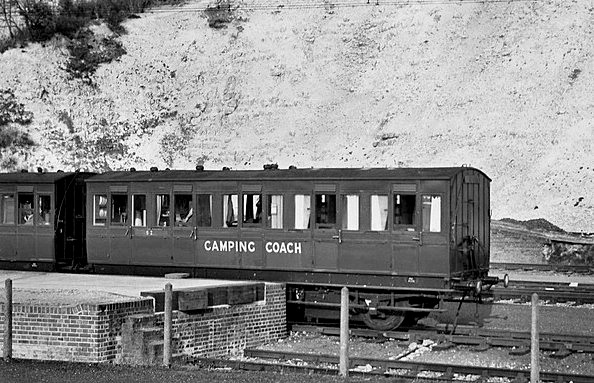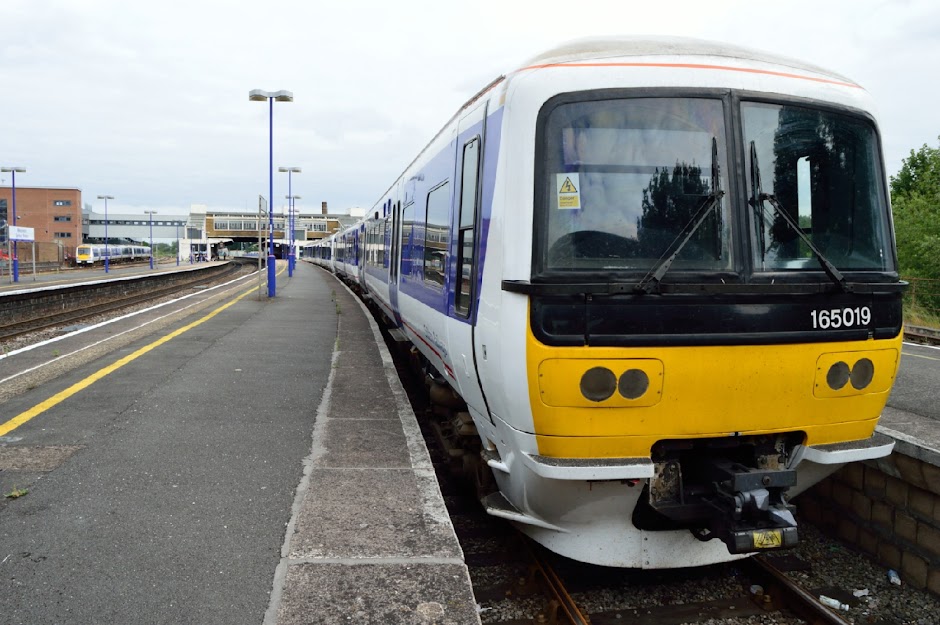Camping has always been a favourite pastime for a large proportion of the British people; a relatively inexpensive way to spend a weekend away or an annual holiday.
For many, nothing can compare to waking up in a new and exciting location following a night spent under canvas.
The mouth-watering anticipation of sausage, egg and bacon sizzling in the frying pan as baked beans or tomatoes simmer in the saucepan to be eaten in the fresh morning air is unequalled.
However, a number of campers with families and those with a slightly larger holiday budget wanted something slightly different from the norm. Something that added a few extra luxuries to their well-earned annual holiday.
 |
| British Railways Camping Coach Leaflet |
In the 1930’s when camping and hiking were said to have been at the height of their popularity, the railway companies of the time, always on the look-out for new ways to increase revenues, added an extra dimension to the whole idea of camping, thereby making it more attractive to people with families. They introduced the camping coach; a railway carriage no longer suitable for normal use by the travelling public though had potential for other employment thereby extending its working life.
Was this idea the first instance of glamping?
The first railway company to spot such an opening in what they hoped would be a lucrative market, was the London & North Eastern Railway (LNER) in July 1933.
 |
| Early LNER Railway Camping Coach |
The LNER operation was quickly adopted by the other rail companies. So much so that by 1935 more than 200 camping coaches were to be found on railway station sidings at over 150 locations throughout the UK, including North Wales, the West Country, Scotland and countless other countryside sites and seaside resorts.
Converting and fitting-out the redundant coaches proved an easy task for the railway companies as each of them owned and operated their own carriage and wagon-building works. A situation that proved to be ideal when the time came for the coaches to be brought back from their sites in winter for repair and service, before being returned in the Spring.
Generally, each camping coach provided its occupants with a bedroom, bathroom and a living-room area where, much like a caravan, extra beds could be made up – and of course, a kitchen.
Although basic in design, the kitchens were adequate for the needs of most coach campers with fitted cupboards, a stove with a fully functioning oven and a table with six chairs. All utensils such as pots, pans, plates, cups and cutlery were provided.
 |
| Early Southern Railway Camping Coach |
Camping coaches could comfortably accommodate a party of up to six people paying an average weekly rent of £3.00, equating to a mere 10/- (£0.50p) for each adult member of the party.
By the time the 1960s rolled around, paying a little extra gave a party the option to enhance their camping experience by hiring one of the limited number of luxury Pullman Coaches, similar to those used on the famous ‘Golden Arrow’ boat train, that were gradually being retired from service.
Even back in those days...'Terms and Conditions' applied...nothing changes!
 |
| Pullman Camping Coach |
One non-negotiable rule was rigorously applied by all of the railway companies. It stated that anyone hiring one of their camping coaches must travel to and from the site by train. Although on the face of it this stipulation seemed by modern-day standards to be rather draconian, one has to bear in mind that in the days when few cars were privately owned this precondition would not have been regarded as something negative.
Although a large number of coaches were sited at seaside resorts, thereby allowing the campers the freedom of not having to adhere to the stringent rules laid down by guest house landladies, many coaches were also placed in the countryside at places of natural beauty.
 |
| GWR Camping Coach Poster |
Situated close to country stations on quiet branch lines, it was a completely safe environment for children to play and investigate the wonders of nature, while at the same time enjoying the fresh air that was so often lacking in the smoky towns and cities in which they lived. Adults were able to enjoy the peace and quiet of the countryside; go for walks, climb the windswept hills, have picnics by the river, visit the village pub, explore a village church - or simply sit in the sun and relax.
However, storm clouds were gathering on the horizon.
As more and more people in the 1960’s began to take advantage of the blossoming availability of package holidays abroad, with the promise of guaranteed sunshine and cheap alcohol, and the private ownership of motor cars increased dramatically, there was a negative effect on booking figures for the camping coaches.
Railway companies could no longer attract the numbers of campers they had achieved three decades earlier. Regrettably, the inevitable happened.
By 1971 the very last British Railways camping coach had been rented out. It was no longer financially viable to provide and maintain them.
Sadly, like the hard working much-loved steam locomotives that had once hauled them in service, the halcyon days of the railway camping coach were over.
A unique era had quietly passed into history.
But, happily, all is not lost! There is a modern alternative to those bygone days. Here is a link to railway camping coach holidays today. Simply click on relevant photo to visit a site.
Please note: 'Along These Tracks' blog is not connected to these sites in any way.






